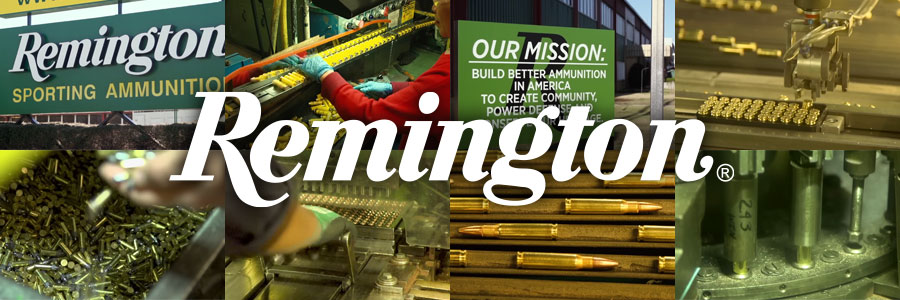Making Remington Centrefire Ammunition
- By Admin
- April 3, 2023
- 08:04 AM

Leading the way in centrefire ammunition, Remington are famous for their Core-Lokt bullets - but their centrefire ammo proposition is uniformly strong, with Remington 9 mm Luger FMJ rounds outselling all other ranges 20:1.
Remington produced all its ammunition in Bridgeport, Connecticut until its huge Lonoke, Arkansas facility opened in 1969, aimed at fast, cost-effective ammo manufacturing - the reason why they remain efficient.
"The plant was optimised to bring raw material in one side, working towards the centre: each step has stayed fairly true to the original processes," said Jared Kutney, Senior Director of Engineering.
Remington wisely retained their original manufacturing processes and time-tested machinery, doubling down on R&D to capitalise on the market, future proof and stay ahead of the competition.
Making bullets
"The type of bullet determines how many steps it takes - there’s a lot of noise and pounding to shape it and put in that shell," said Director of Product Affairs Kris Carson.
Recycled lead ingots are melted down in the plant, extruded into long wires that are cut into slug projectile cores. Long copper sheets are stamped into hollow jackets for the slugs, which are inserted under ultra-high pressure.
Primers are made onsite, including lead-free configurations. Once shells are shaped and primer pockets inserted, a bunter stamps a cartridge type into the metal. Then, an extractor groove is created - the final step for pistol shells.
Rifle shells feature a shoulder that is softened by additional processes to avoid weakening the brass. Finally, the shell is pierced and the primer inserted simultaneously, before sending the round for testing.
Original machinery
As bankruptcy loomed pre-2020, Remington’s machines sat idle as production dwindled - until Vista hugely reinvested in the Lonoke plant.
Bringing in vast quantities of raw material, using original equipment and maintaining existing processes was a product-driven, financially savvy decision that elevated Remington’s name and Vista’s stock.
"With money for raw materials, we've seen our machines come to life," Kutney said. "It’s really impressive to see how much product we can put through."
Innovation
Remington have had to innovate - Vista prevented their collapse, but reclaiming a market-leading position is tough. “Consumers depend on us for the latest, greatest products,” said President of Ammunition Jason Vanderbrink. “When we acquired Remington, that wasn’t the case.”
Focusing production of 9 mm Luger FMJ ammunition into a dedicated facility equipped with cutting-edge equipment has satisfied demand and driven sales exponentially.
"We know consumers are interested in quality products that are affordable: so we make sure our manufacturing costs keep up with the competition," said Nick Sachse, Director of Product Management. "So we dedicated an entire facility to those 9 mm rounds, because they outsell every other FMJ round on the market."
While competitors dialled back R&D during the ammunition slowdown of the past three years, Remington avoided this “nearsighted mistake”. “This surge isn’t going to last forever,” continued Vanderbrink. “When it ends, we’ll have the R&D pipeline to really bring it to the consumer.”


